First things first. The SEO industry often seemingly has a bit of a identity issue. What exactly is it that we do? From “technical” SEOs to content strategists and more… it’s kinda hard to nail down. Link builders? Check. Audit specialists, present and accounted for. To me? At the end of the day I “optimize” for search engines. Which means ALL of ‘em. From Google and YouTube, to Facebook and Amazon. Where there’s a search box, I’ll be there.
Which brings me to today’s musings. Not all strategies work for all sites and traditional approaches can be limiting. You gotta bring all your tools to the job site. And above all always try to be ‘future proofing’.
Looking beyond the obvious
This seemingly innocuous addition to the Google Search family, is one such area I feel is worth considering.
Google Discover was announced last fall, but in truth was just a re-branding/build of Google Feed. It had the standard reasoning and value such as being able to “surface relevant content to you” and being “a major update to this experience, including a new name, a fresh look, and a brand-new set of features.” – Woo hoo…
Anyways..
What’s particularly interesting is that it’s a meaningful direction. I remember digging into Google Assistant stuff back a few years ago and it occurred to me that getting visibility in Google is ever-evolving. That all roads certainly do not lead through that little text box on Google’s homepage these days.
The successful SEO evolves with the world…
And so my friend, bear that it mind as we play with this one. We all know Google’s love affair with mobile, at the very least, look at it as part of the larger whole. We’ll talk more about this afterwards.
Meet; Google Discover.
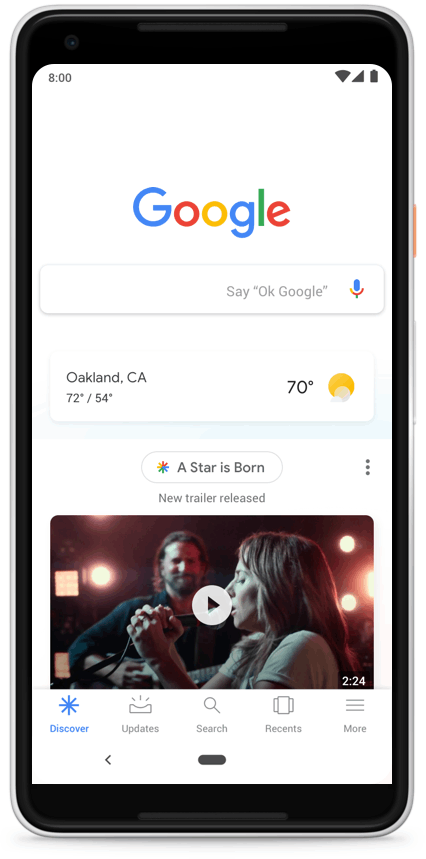
In short, this little toy surfaces content, (it deems worthy) through a type of Google Suggest on steroids. It drops various types of content to the user based on a combination of search history and personal preferences.
What this means for us of course is that our precious rankings will most certainly be eaten for lunch in some instances. Thus we’re here to find out ‘when’ not ‘if’ that’s going to happen to our efforts.
For starters let’s look at Google’s use of the term “evergreen content” and the lean on “more videos and fresh visual content”. That should give us a few hints on our direction.
Google also mentions they want to surface content, “that (isn’t) new to the web, but are new to you”. This gives us hope that we can get a few new eyeballs, not rely on getting above the fold for a given query.
They gave an interesting analogy; “If you’re learning to play guitar, for example, you might see beginner content about learning chords. If you’re already a skilled musician, you may see a video on more advanced techniques.”
Just to keep harping on it, this type of evolution in thinking is paramount to establishing a strong Search Marketing strategy that will stand the test of time. This is insight into the belly of the behemoth brothers and sisters!! Preach it with me dammit!
Under the hood
The first thing to note is that this is certainly part of the “things not strings” mentality as part of the ‘ol Knowledge Graph. If you’re not sure what that is? Uhm… wow. Really? Moving on.
There’s also much to be said here about entities as well as it’s also a strong core of what’s going on behind the scenes here. Which of course is fairly standard with all things related to the knowledge graph, (see what I did there?). To bone up that, brother Bill has ya’ covered on these two posts.

Users can either go Vanilla and let Google decide what they want to see… (
- Sports
- TV
- Movies – have screen BD
- Musicians
- Athletes
- Actors
- Public Figures
- Business
- Hobbies
- Lifestyle
- News & Politics
- Technology
That should give you a sense of the types of content that can be leveraged. But that’s not all…
Users can then also get a little more granular in their choices by going into the sub-topics on each of the above;
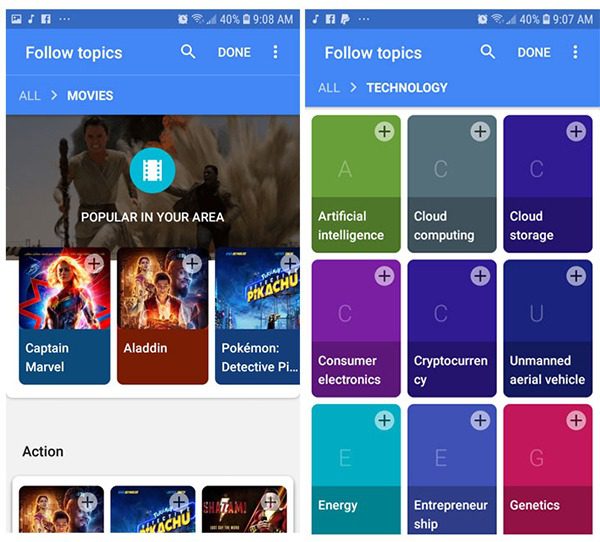
If you’ve not spent time in there, I’d get on it. Once more, even if this “may” not apply to your current SEO step-dance, it might some day and more importantly; we’re trying to understand Google as a whole. Yup, went there again… hoping you pick up on path here.
Oh and on a random note, this post on “topic layers” and the knowledge graph, is likely worth a read as well…
Can we leverage it?
As it is with all things in SEO, it depends. The first obvious part is that it’s more part of what traditionally you would find in Google News. Which means you should probably read the Google News Guidelines for a start. As for how things tend to have been ranked over there, we know a few things;
Google News Ranking;
- Freshness of content
- Diversity of content
- Rich textual content
- Originality of content
- User preferences for topics or publishers
Most certainly there’s going to be a far deeper set of algos involved here, but that’s a good starting point for me to leave you with. I’d also venture to advise including images and video into the mix as well.
Oh and AMP is also going to be important. We’ll get back to that shortly.
Is there value in it?
What really got me digging into all of this in more depth was the inclusion of Discover into Google Search Console recently. These reports show;
- How often is my site shown in users’ Discover? How large is my traffic?
- Which pieces of content perform well in Discover?
- How does my content perform differently in Discover compared to traditional search results?
Hmmmm… ok, but what’s it look like you ask? Ok, even it ya didn’t, going to show you anyway. Here’s some data from a news site I manage;
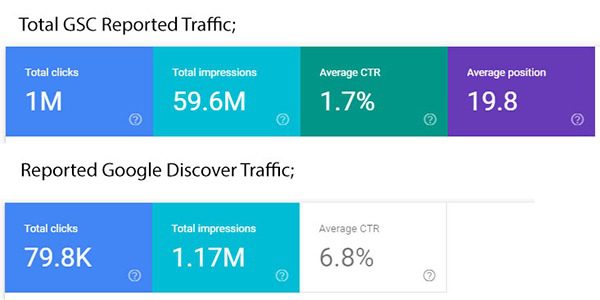
Yea, in the grand scheme of things it’s only 7.8% of the traffic, but man… that’s 80k more visits that we added. And of course that gives us a chance to keep adding new recurring visitors and further roads to travel.
Now we can also isolate the “types” of content that Google’s eating up for that and further replicate it within the larger context of our SEO strategy. In GSC’s new report for Discover, you will also see that there is an option to compare data between AMP vs Non-AMP.
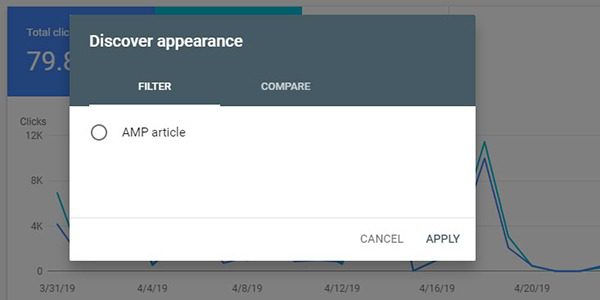
By looking at that, we can see the AMP pages accounted for 67k of that 79K total. Once more the connection between AMP and their Google News carousels become apparent.
So yea… it’s certainly worth looking into. Should you use it? Does it suit your site? Well… it depends.
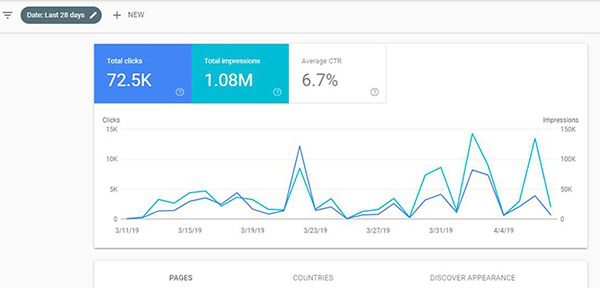
The Bigger Picture
Ultimately, I once more come back to the real lesson here; SEO is a complex beast (and so is Google). We really need to be watching from as many angles as possible to ensure we’re leveraging that beast. Get beyond KW research, spamming links and mostly, that simple search box.
Getting maximum visibility in Google continues to evolve and it takes some evolving of those in “this thing of ours” to stay afloat. Ya’ just gotta future-proof your SEO efforts and push the limits to be successful. Regardless of what this addition means to your strategy, understanding where it fits into the larger whole is key here.
Got questions/thoughts/ideas? Hit me up in the comments or my other social channels…
As you were…